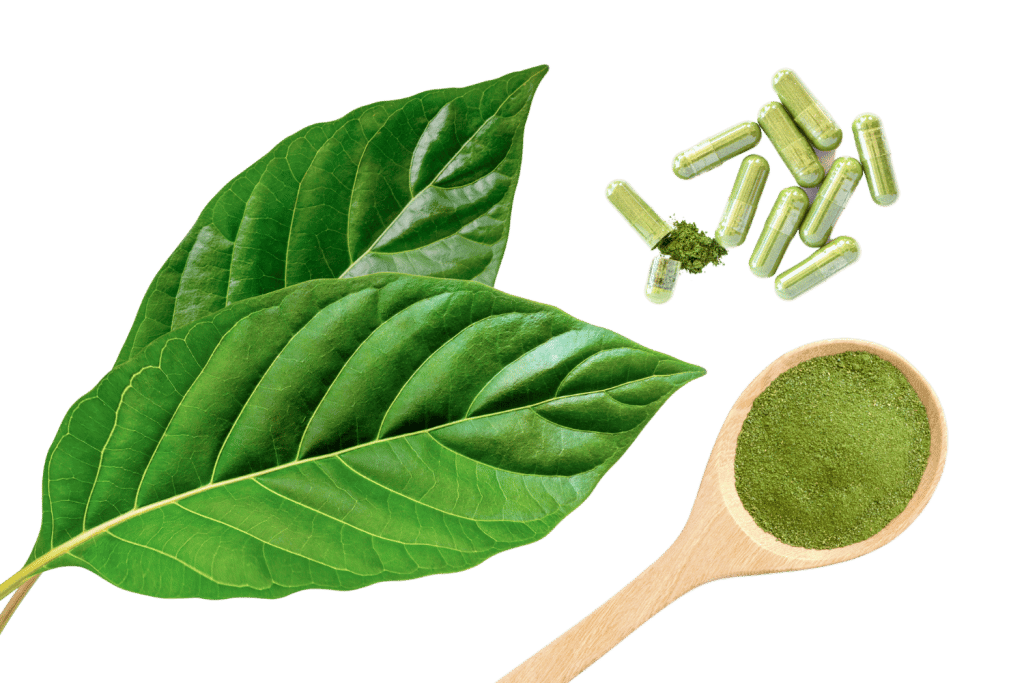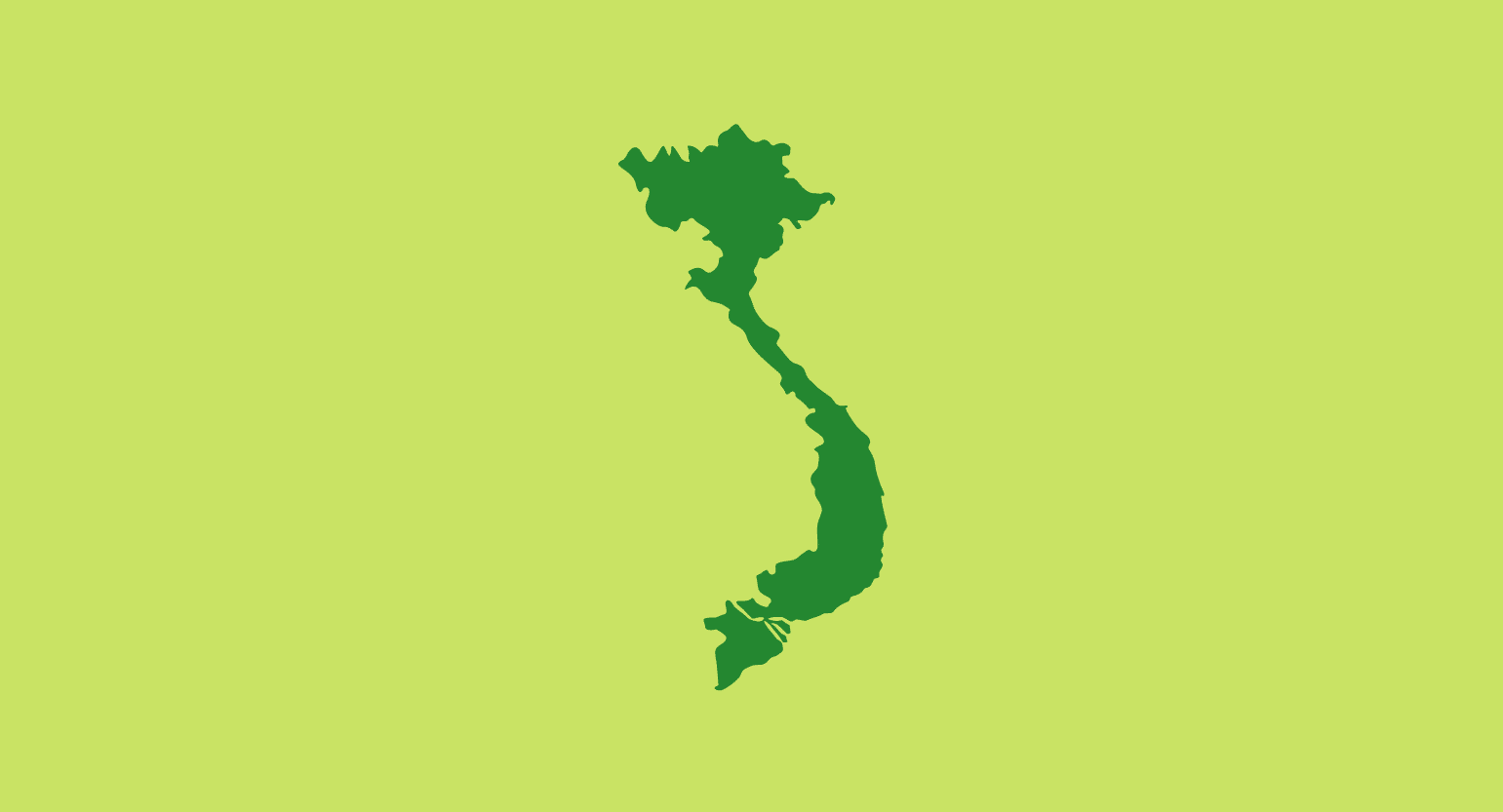Kratom (Mitragyna speciosa) is a relative of the coffee plant, and the effects are comparable to that of a cup of coffee in smaller doses. The effects tend to be heavier and more relaxing in higher doses, similar to opioids.
Kratom leaves have been used medicinally and grown in Thailand, Malaysia, and Indonesia, endemic to Southeast Asia. Vietnamese kratom has quite a following, with many kratom enthusiasts calling it some of the best.
This may be due to the mineral-dense soil and unique climate in which it’s grown, trailing along the side of the Mekong River. Although kratom grows in substantial quantities in some regions of Vietnam, the law surrounding kratom’s legality is clouded.
Kratom Legality In Vietnam & Elsewhere
Kratom is illegal in Vietnam.
Every country treats kratom differently. Some are accepting, some ignore it, and some ban it. Even the U.S. laws are all over the place — many states and cities have outlawed kratom.
When it comes to countries where kratom is natively grown, kratom is a legal gray area. One of the first countries to ban planting kratom was Thailand through a unique law passed back in 1943.
Later down the line, in 1979, the government decided to ban the sale and use of kratom as well. Some say this may have been due to the government’s goal of gaining control of the opium market.
The use of kratom was becoming more popular, as many individuals were trying to find a more affordable way to achieve an opium-like high. Opium was commonly used to manage chronic physical pain, but it was also used recreationally.
Thailand decided to repeal the law in 2018, making kratom fully legal for planting, harvesting, selling, and using.
Malaysia decided to take a different approach, keeping kratom banned within the country. However, kratom is still prominent because there is a bounty of trees that grow natively in Malaysia.
Special Malaysian groups have been pushing for stricter management of kratom within the country. Because kratom has psychoactive properties, many are skeptical of its use and concerned about the risk of abuse.
Indonesia has decided to ban kratom; however, the ban doesn’t take effect until 2024. They’ve decided to give it some time so that farmers have plenty of time to switch to planting, harvesting, and selling different types of legal crops.
If Indonesia does indeed ban kratom once 2024 rolls around, it will impact the market for kratom heavily. Indonesia supplies the world with approximately 95% of the kratom exported globally.
Most kratom sold through online vendors, located virtually anywhere globally, can typically be traced back to Kratom farms in Sumatra, Bali, and a handful of other locations.
The WHO, Kratom, & Future Legislation
Kratom might earn a new reputation, thanks to the World Health Organization (WHO). The WHO reviews new drugs every year, checking for safety and possible issues. Kratom was under inspection recently, making advocates nervous. A negative review, even slightly, would be more ammunition for governments already looking to ban it.
Fortunately, the WHO stated kratom doesn’t need to be controlled and seems to pose no risks. However, the organization will continue to watch it.
Will public perception change? Will governments become more open to its use? Time will tell.

Can I Buy Kratom In Vietnam?
There are no legal sources to buy kratom in Vietnam.
It seems there are a few suppliers located within Vietnam, and the use among natives in these areas is probably relatively high, especially since kratom leaves can be chewed raw for a buzz and boost of energy.
However, it’s not incredibly easy to find a kratom vendor in Vietnam because it’s illegal. You can find many suppliers in Indonesia, but nowhere near as many within Vietnam. You’ll have to work relatively hard to find a good source, and again, you’d be breaking the law.
There are theories that kratom trees are typically grown in Vietnam’s “An Giang” province. Long Xuyên, the capital city, tends to be the specific destination of these elusive forests along the Mekong River.
Others claim the trees reside on the country’s northern coast rather than along the river where many dense rainforests are located. Since the Vietnam government has outlawed the kratom plant, farmers are not allowed to harvest the leaves without breaking the law.
Regarding U.S. vendors selling “Vietnam Kratom,” it’s not common for American vendors to admit receiving their kratom from the country because of the strict laws. The handful of kratom vendors that use Vietnamese suppliers is likely putting the industry at risk simply because of its legal status in Vietnam.
If you’d like to try kratom, but you live in Vietnam, consider traveling to Indonesia, where you’ll be able to find plenty of suppliers. You can spend some time there and enjoy some of their premium kratom but keep in mind that this could change in 2024 — so plan a trip soon.
For the sake of the global kratom market, hopefully not.
Why Is Kratom Banned In Vietnam (& Other Countries)?
For starters, the health and safety of the public are prioritized in situations like this. There is also little evidence backing kratom and its benefits compared to its potential risks. This brings up another issue, which is addiction and abuse.
When consumed in larger doses, kratom can cause an opiate-like sensation and induce an intensely relaxing experience. Something that has the potential to produce some degree of psychoactive and sedating effects is always going to provoke caution, especially from the government.
Many use individual cases of overdose associated with kratom use, and some adverse side effects are used as the main argument for banning the plant. Some think their real goal is protecting the pharmaceutical industry by banning medicinal plants since it may be a more beneficial and profitable approach.
Kratom is effective, as many kratom enthusiasts and users will say without hesitation. It’s been around for a long time and is used for its wide variety of therapeutic properties (but that’s a different article).
Legalizing this medicinal plant and others (like marijuana) could lead to huge losses for many pharmaceutical companies. Loss of revenue may be enough to keep many people opposed to natural remedies.
Also see: Is it Legal to Buy Kratom in Bangladesh?

Kratom Use: A Quick History
Countries such as Thailand, Malaysia, Vietnam, and Indonesia have been using kratom for its medicinal properties for centuries. Kratom trees grow abundantly in the dense forests of these countries, and kratom use is looked on positively in many areas.
Manual laborers typically use kratom to combat fatigue and physical pain but also find a boost of energy and motivation.
Back in the early 1990s, kratom became popular in the U.S. because it was a natural alternative to street drugs and opioid-based painkillers. Opioids are highly addictive, and the risk for abuse has been skyrocketing.
In 2010, there were 21,088 recorded opioid-involved overdose deaths in the U.S. In 2017, that number increased to 47,600 and increased again in 2018, with 46,802 deaths. This was followed by a sharp increase in 2019 to 49,860 fatal overdoses related to opioids.
Opioids are highly addictive and dangerous due to how fast individuals develop tolerance to the substance. This results in individuals taking substantial doses, which can cause respiratory complications and failure.
Kratom can provide a similar sensation to opioids in larger doses and more stimulating effects in smaller amounts. However, this natural plant does not pose the same health risks and consequences that opioids do.
Many individuals use kratom to manage chronic pain or withdrawal symptoms due to quitting opioids. Therefore, this is a significant factor in why kratom has sparked so much interest.
One interesting study analyzed the self-treatment of withdrawal by using kratom. Their findings conclude that mitragynine, one of kratom’s main alkaloids, may exert several pharmacological effects that could ease opioid withdrawal symptoms [1].
Known Side Effects Of Kratom
Side effects of kratom are highly uncommon in moderate users. They’re more likely to occur in first-time users or those abusing the plant and taking too much.
Something else to keep in mind is that mixing kratom with other substances, including alcohol, can cause some severe side effects.
The most common known side effects of kratom are as follows:
- Alteration of hormone profiles in the body
- Anxiety and paranoia
- Dizziness
- Extreme fatigue, lethargy, and sedation (this may be a positive for some)
- Gastrointestinal discomfort (nausea and vomiting)
- Jaundice-like symptoms, due to affecting the liver and increasing bilirubin levels
- Liver function can be negatively impacted by long term abuse
- Liver issues can cause secondary problems in the kidneys
There have been cases where certain individuals have become addicted to the plant. Some people can better control their habits compared to others.
Many native users will chew kratom leaves throughout their workday, which can lead to darkening, or hyperpigmentation, of the mouths lining near the cheeks.
Although there are some downsides to kratom use, especially when you are overdoing it, the onset of addiction and the consequences are not the same as that of opioids.
Kratom Deaths: Can Kratom Be Fatal?
No, kratom itself does not produce lethal effects when used correctly and responsibly. However, combining kratom with other substances, such as opioids or alcohol, can lead to severe complications. Most deaths involving kratom also involved another drug, usually opioids. This is a dangerous combination and should be avoided.
Something else to consider is pre-existing health conditions and taking certain medications. The addition of kratom could cause an adverse reaction that can be fatal.
Thorough and rigorous studies have been suggested to weigh kratom’s potential for medicinal use. The scenario with kratom is quite similar to that of cannabis.

How To Take Kratom Safely
Fortunately, there’s something for everyone when it comes to kratom. There are many ways to take kratom, and what’s best will come down to personal preference.
You can opt for capsules, which are an easy way to get a discreet and precise dose of kratom. It’s also the best option for when you’re on the go.
Kratom can also be brewed into tea, which is another popular method. However, this is best for individuals with strong stomachs. Since kratom can be pretty harsh and bitter, it may be challenging to get past the taste.
A more modern approach is taking enhanced kratom powders and kratom tinctures, which are highly potent and have different dosage guidelines. Tinctures require the users to take a tiny amount of concentrated kratom for huge results.
It’s best to avoid all other substances when using kratom; this includes alcohol and nicotine. You should also steer clear of any other illegal substances, prescription painkillers, or if you’re taking certain medications, you’ll want to double-check to make sure kratom isn’t going to interact with it first. It’s always better to be safe than sorry.
Regardless of your specific situation, you’ll want to make sure you purchase your kratom products from a trusted, reputable source. You can find millions of reviews online for tons of different vendors.
What Is the Correct Dosage for Kratom?
Dosing amounts vary depending on certain factors, such as body weight, existing health conditions, certain medications, whether or not you’ve eaten, and more.
Beginners should always start small and try a low dose of something less than two grams. Allow the dose to run its course for a full 24 hours before taking any more, as this will give you a very clear idea of how it will affect you.
You also have the option of microdosing, which will give you a buzz similar to an energy drink or a strong cup of coffee. Microdosing is typically less than 2 grams of kratom.
Here are the suggested dosing guidelines, though you’ll have to find what works best for your needs:
- Small dose: 2-5 grams
- Medium dose: 5-8 grams
- Large dose: 8-12 grams
Starting with a smaller dose is the best approach, even if you’ve been using kratom now and then and switching things up and trying a new, more potent strain. Get a feel for how the dose and the strain will affect you, do it a couple of times over a few weeks before you decide to increase your dose.
You can always take more, but you can’t take it back once you’ve consumed it. This can push certain individuals a bit too far and cause vomiting, anxiety, and nausea.

Key Takeaways: Is Kratom Legal In Vietnam?
Kratom is not legal in Vietnam.
Kratom is currently banned in Vietnam, so if you’re looking to score some, you’ll want to plan a trip to Indonesia sometime before 2024. If you find a supplier in Vietnam, know that you and the seller are breaking the law and could potentially face serious consequences.
We don’t know what the future holds regarding kratom’s legality in Vietnam. If more detailed studies are performed regarding kratom’s benefits and medicinal potential, and if there can be more proof provided to the Vietnamese government that kratom isn’t a significant risk, anything is possible.
- Boyer, E. W., Babu, K. M., Adkins, J. E., McCurdy, C. R., & Halpern, J. H. (2008). Self‐treatment of opioid withdrawal using kratom (Mitragynia speciosa korth). Addiction, 103(6), 1048-1050.

